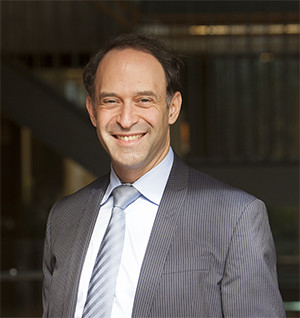
Professor Jerry Greenfield
Research into the complex genetic and environmental factors that contribute to obesity, insulin resistance and type 2 diabetes has earned Professor Jerry Greenfield the 2017 Ranji and Amara Wikramanayake Clinical Diabetes Research Award.
Speaking to the limbic ahead of his lecture at the ADS & ADEA Annual Scientific Meeting, Professor Greenfield said the factors that determine progression from obesity to type 2 diabetes were still not well elucidated.
However his team has identified a number of underlying phenotypes that might dictate individual response to weight loss and diabetes medications.
“We can determine where their body fat is distributed, how insulin sensitive or insulin resistant they are at the liver and the muscle; how much fat they’ve got in their pancreas, or how much lipid they’ve got in their muscle.”
“There are various things we can delve down into and really sub-phenotype overweight and obese people and then determine predictors of response to treatment.”
Professor Greenfield is co-head of the Clinical Diabetes, Appetite and Metabolism Laboratory at the Garvan Institute of Medical research and head of Diabetes and Endocrinology at St Vincent’s Hospital Sydney.
He said his postdoctoral fellowship in the UK, where he studied monogenic obesity disorders, paved the way for the work he and his team are currently doing at the Garvan Institute.
“We’ve studied the insulin-sensitive obesity phenotype in order to separate the effects of obesity from insulin sensitivity and insulin resistance on various metabolic phenomenon.”
“We’re trying to match the mechanism of action of medications to an individual’s underlying phenotype.”
Professor Greenfield said being involved in clinical research fostered a critical mind, including when consulting patients.
“I suppose I sit in front of a patient wishing I could better predict the medication that is going to work for them, whether it be in terms of improving diabetes control or lowering their weight.”
“Our current approach is to put everybody on metformin where some people respond and some don’t. If they don’t respond adequately, we might add another medication but we do it in a fairly blind fashion, because we only have basic details about the patient’s phenotype.”
He said some people were apparent non-responders to medications such as GLP-1 receptor agonists or SGLT2 inhibitors.
“We’re unsure why that is the case and we’re unable to predict it.”
He said his team was about to embark on a study of personalised diabetes prevention and treatment using their knowledge of baseline phenotypic data to predict response to specific interventions.
“The ultimate dream is to be able to come up with a non-invasive marker that might be measurable in blood that strongly differentiates insulin sensitivity and insulin resistance in individuals, and even better, at particular sites.”
“For example, if we have a medication that targets insulin resistance in the muscle and give it to someone insulin resistant in the liver, they might not be as responsive as if we were to give it to someone insulin resistant at muscle.”
The Ranji and Amara Wikramanayake Clinical Diabetes Research Award was made possible by the generosity of Dr Ranji Wikramanayake, an Honorary Life Member of the ADS.